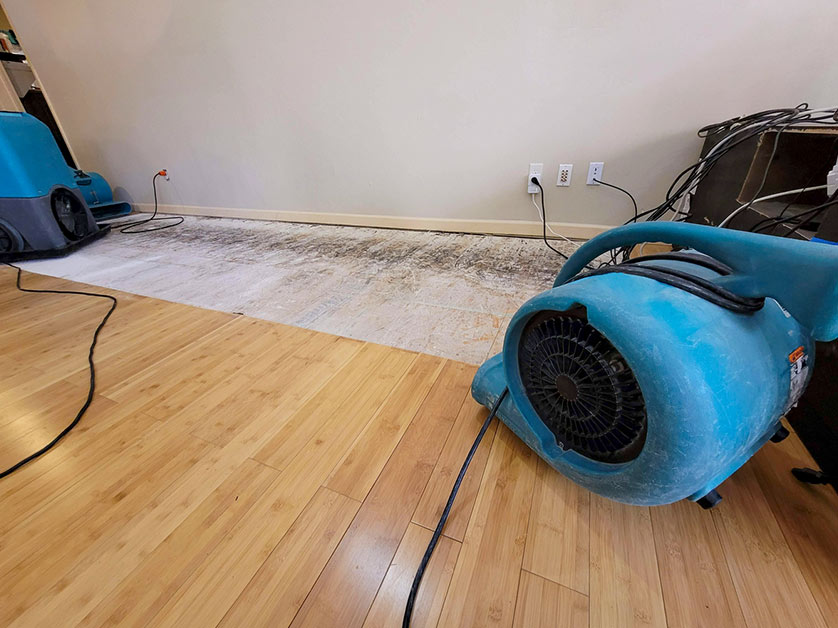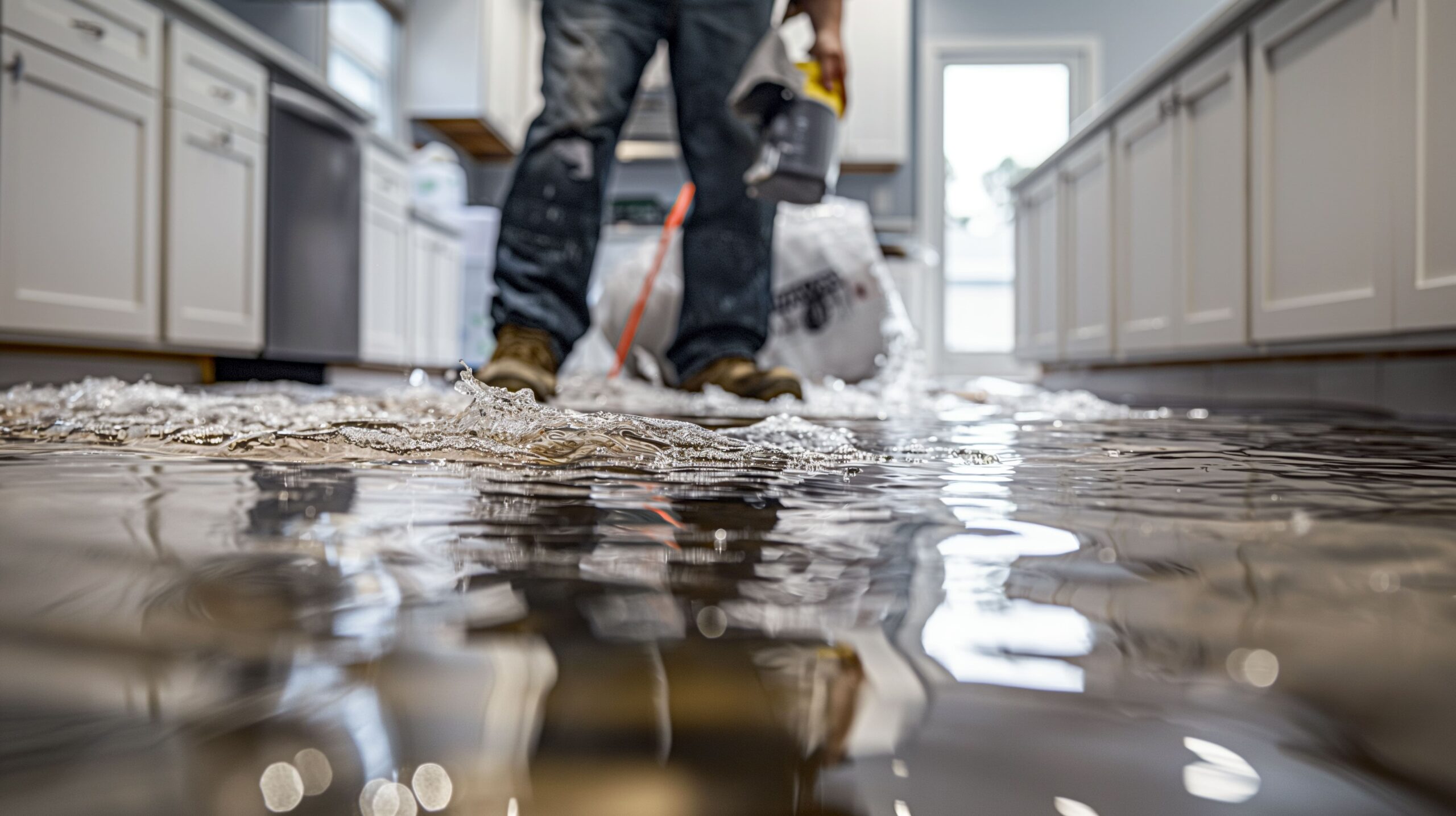Top Tips for Effective Water Damage Restoration: Protect Your Home Today
Water damage can strike all of a sudden, creating significant disturbance and prospective hazards. Effective reconstruction calls for an organized technique to minimize additional damage. From evaluating the damage to executing safety nets, each step plays an essential duty in guarding residential property. Comprehending these strategies can make all the distinction in the results of a water-related dilemma. What necessary actions should be focused on to ensure comprehensive security?

Analyze the Damage Right Away
When a water damage occasion occurs, it is necessary to assess the damage instantly to mitigate additional issues (Water Damage Restoration). This initial assessment assists determine the degree of the damage and recognizes impacted areas. Water can seep into walls, floors, and furniture, leading to mold and mildew development and structural instability otherwise addressed immediately. A complete evaluation ought to consist of checking for staining, moisture, and musty odors, which suggest dampness existence. It is likewise essential to document the damage via photos and notes for insurance policy objectives. Involving experts for a much more thorough evaluation might be essential, specifically when managing hidden or considerable damage. Early acknowledgment and precise analysis lay the structure for effective remediation and guard the residential or commercial property from extra issues
Shut down the Supply Of Water
Shutting down the water supply is a vital action in protecting against more damage throughout a water-related incident. When a leak or flooding takes place, immediate activity is important to decrease the extent of the damage. Finding the major water shut-off valve ought to be a priority. This valve is typically situated near the water meter or where the water line enters the residential property. Once located, turning the valve clockwise will quit the flow of water. In instances where the main valve is hard to reach, specific shut-off valves for home appliances might likewise be utilized. Immediately turning off the water system not only safeguards the property from additional injury but also assists in the subsequent repair procedure, making sure that recovery efforts can start without delay.
Eliminate Excess Water Quickly
Getting rid of excess water quickly is crucial for decreasing damage and avoiding mold and mildew growth in affected locations. The longer water continues to be in contact with materials such as insulation, drywall, and timber, the higher the danger of architectural damage and the growth of mold. Property owners must act rapidly to assess the scenario and utilize appropriate tools, such as wet vacuum cleaners or pumps, to extract standing water successfully. If the quantity of water is substantial, contacting specialist remediation solutions might be required, as they can give customized tools and know-how. Additionally, removing furnishings and possessions from the damaged location can aid to reduce damage and promote the general restoration process. Prompt action not only shields residential property yet also aids in a smoother recuperation journey.

Dry Out the Affected Area
After removing excess water, it is essential to dry out the affected area thoroughly. This involves removing any type of standing water and boosting air circulation to facilitate dissipation. Mold Remediation After Water Damage. Effective drying out will aid stop mold development and additional damage
Get Rid Of Standing Water
Quickly resolving standing water is essential for efficient water damage repair. The visibility of stationary water can bring about more home damage and produce an environment for mold development. To mitigate these dangers, it is vital to get rid of standing water as promptly as feasible. Water Damage Restoration. This process usually involves utilizing submersible pumps, damp vacuum cleaners, or specialized extraction devices. Experts recommend assessing the deepness and extent of the water before selecting the proper technique for removal. Safety and security preventative measures must likewise be taken, consisting of wearing protective gear and making certain electrical energy is switched off in influenced areas. Once the standing water is effectively gotten rid of, the drying out procedure can start, further safeguarding the home from continuous damage

Rise Air Blood Circulation
Increasing air flow is important for successfully drying out locations affected by water damage (Mold Remediation After Water Damage). This process assists to expedite dissipation, reducing the danger of mold and mold development. Professionals frequently advise using followers to create a constant air movement throughout the room. Putting box fans in windows can attract in fresh air, while high-velocity fans can direct airflow towards moist surface areas. In addition, opening windows and doors allows for cross-ventilation, improving the drying procedure. Dehumidifiers can additionally be used to remove excess dampness from the air, more assisting in drying out. By making sure that air distributes freely, residential property proprietors can considerably decrease the long-lasting effects of water damage and shield the stability of their framework
Evaluate for Mold Growth
Mold growth is a significant concern complying with water damage, as it can result in health problems and structural wear and tear. After any flooding or leaks, it is important to perform a complete examination of the influenced areas. This includes checking concealed rooms such as behind walls, under carpets, and in attic rooms or basements where moisture may stick around. Indications of mold consist of a mildewy odor, staining on surfaces, or noticeable growth. Homeowner must make use of safety equipment when evaluating, as mold spores can present health and wellness risks. If mold is found, it is crucial to address it right away, as delaying remediation can intensify the problem and raise the threat of major wellness worries for residents. Early intervention is crucial to effective mold and mildew administration.
Fixing and Restore Damaged Frameworks
When addressing water damage, it is important to first examine the architectural honesty of the impacted areas. This evaluation aids identify potential threats and educates the necessary repair techniques. Involving professional repair solutions guarantees that the restoration procedure is carried out securely and effectively.
Assess Structural Honesty First
Prior to launching any kind of water damage remediation, it is necessary to assess the structural integrity of the affected location. This evaluation aids recognize any compromised aspects, such as light beams, walls, or structures, which may pose safety threats. Checking for indications of warping, breaking, or mold growth is important, as these indicators can disclose underlying damage that requires immediate attention. In addition, understanding the level of the damage can direct reconstruction efforts and figure out whether repair services are feasible or if replacement is necessary. It is very important to record findings extensively, as this details can be beneficial for insurance coverage cases or future referral. Prioritizing structural analysis guarantees that reconstruction initiatives continue safely and properly, ultimately securing the residential property and its residents.
Use Professional Restoration Services
Making use of specialist restoration solutions is important for successfully fixing and recovering broken frameworks after water events. These experts have the required training, tools, and experience to minimize and evaluate water damage extensively. They can determine surprise concerns, such as mold development and architectural weak points, that might not be quickly noticeable. Specialist solutions additionally employ advanced drying strategies and tools, ensuring that all check over here dampness is gotten rid of to avoid more damage. Additionally, they follow sector criteria and policies, making sure that the restoration process is efficient and risk-free. By engaging remediation specialists, homeowner can quicken recovery, reduce long-lasting damage, and ultimately safeguard their financial investment. This aggressive approach is important in maintaining the integrity and safety of affected frameworks.
Avoid Future Water Damage
To successfully stop future water damage, homeowners have to take on a proactive technique to repair and maintenance (Water Damage Restoration). Normal examination of downspouts, roofing systems, and rain gutters is important; stopped up rain gutters can lead to water overflow and roof covering leaks. Furthermore, looking for leaks in plumbing fixtures and appliances can obstruct prospective damage. Home owners must likewise consider installing sump pumps in basements or low-lying areas to manage water accumulation. Securing splits in structures and guaranteeing correct drain around the property are vital action in securing versus water breach. Furthermore, keeping moisture degrees with dehumidifiers can protect against mold and mildew growth. By carrying out these safety nets, house owners can substantially minimize the danger of water damage and protect their residential or commercial property for the long-term
When a water damage event occurs, it is necessary to assess the damage immediately to alleviate more issues. Eliminating excess water immediately is crucial for lessening damage and stopping mold and mildew development in affected areas. Swiftly attending to standing water is vital for efficient water damage restoration. The existence of stationary water can lead to additional residential property damage and produce a setting helpful to mold and mildew growth. Prior to launching any type of water damage reconstruction, it is crucial to analyze the structural honesty of the affected area.